






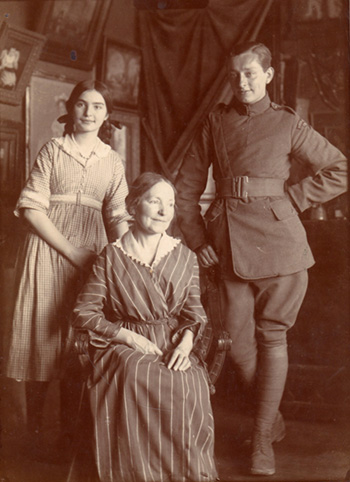
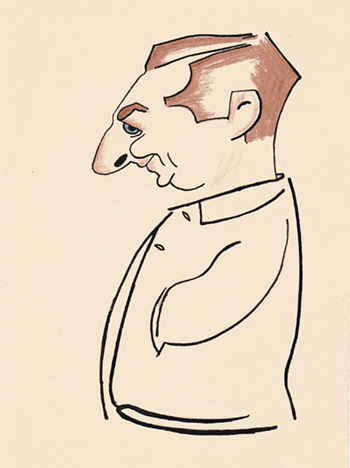
Tom Sarginson was born in Paris in 1896 and brought up in France by his French mother and English father.
His father, Bill Sarginson, was a tailor's cutter and his wife Jeanne, a Giletiere (waist-coat maker). Under
French law Tom took his father's nationality but grew up speaking
nothing but French and only learned to speak English when he
served in the Royal Flying Corps as
an electrical mechanic based near Rouen, Northern France, in the Great War.
He
looks very handsome in the photograph in his RFC uniform on the left
with his Aunt Marie and Cousin Suzanne at their home in Paris. His
parents returned to England during the war and Bill Sarginson died
there in 1920 and
Jeanne in 1931.
After
the war, Tom completed his apprenticeship in England as an electrical
engineer and came over to Calais in 1926 to help start
Courtauld's factory, Les Files de Calais SA, producing rayon, Soie Artificielle
(artificial silk). His English wife Nell followed him with their new
baby daughter Beatrice Marie. They settled in a house opposite the
factory, where a row of English style houses had been built for the
factory foremen (they are still there). Irene Marguerite was born in
1928 and Jeanne Elisabeth in 1932. Tom became the chief engineer, owned
a car, was respected by both the French and English and was a stalwart
of the British
Legion.
The caricature was drawn outside the Trocadero on a visit to Paris in 1933.
If you know where to look Tom Sarginson and his youngest daughter, Jeanne, who was born in France, can just be seen in the photograph taken on the 26 July 1936 when King Edward VIII unveiled the memorial to the Canadians who died on Vimy Ridge (he abdicated in December) and he is second from right in the photograph taken at Calais on the day King George VI and Queen Elizabeth left on the Royal Yacht after their state visit to France in July 1938.
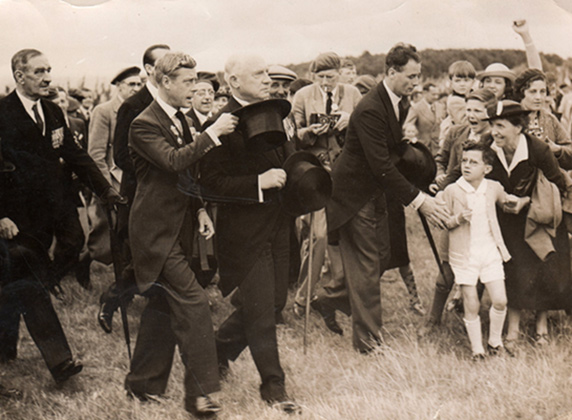
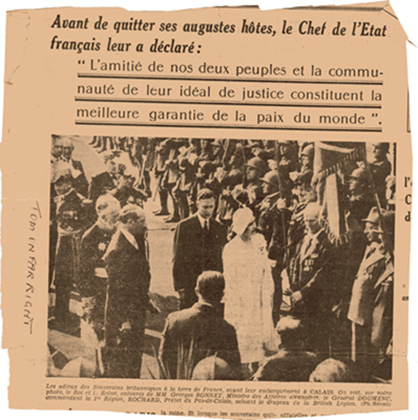
King Edward VIII at Vimy Ridge on the 26 July 1936 on his only State Visit abroad and his younger brother King George VI at Calais in July 1938
Courtesy Jeane Gask
The youngest of his daughters, Jeanne Gask, tells her family's story below and more fully in a book to be published in May 2015 on the seventieth anniversary of the end of the war and seventy five years after the Germans occupied Calais and her father was interned.
*****************
"We three girls went to the College Sophie Berthelot (I went when I was five). We were brought up as French and all our friends were French but our nationality was British. Our father hired a cottage in Sangatte every summer, and moved the family there, while he commuted to work. Our English Grandparents (our Mother's parents) came over and stayed there with us. These were wonderful days playing by the sea with my dog.
Although
I was only eight in 1940, I still remember the names of some members of
the British community: Mr. Allitt, Mr. Hartshorn, the British Consul
and Mr. McCullagh, the church minister. Also Captain Masters, Captain
of the Cote d'Azur, the ferry between Calais and Dover, who let me take the wheel when I was about six years old! The Cote d'Azur was sunk off Dunkirk in 1940, salvaged and converted into a minelayer renamed Ostmark and sunk by the RAF in the Baltic in April 1945. I must have known Johnnie Eslemont who escaped from Calais with his parents on HMS Venomous. I remember the name but he was much older than me and his father was one of Tom's colleagues.
When the German invasion was nearing
Calais Tom was told that the last boat for England was leaving and that
we should go too, but Tom thought everyone was panicking and that we
should stay until it "blew over".
A couple of days later, Tom took the dog, cat and the chickens to
friends in the country, put two mattresses on the car roof for
protection in case of machine-gun bullets, tied the family tent to the
back bumper, packed the car boot with food and blankets, put us three
girls on the back seat and said, "Come on, we'll go camping in the
South of France", and off we went.
We
immediately found ourselves part of the exodus of cars, trailers,
carts, bikes and people on foot, all fleeing in front of the Germans.
Abbeville was on fire. Tom said, "Once we're over the Somme, at St.
Valery, we'll be free." But we never made it. We went round in circles
at Rue and sought shelter in the grounds of a farm at Quend, near Rue,
and stayed there a few days, sleeping in a barn and a cowshed, till we
were over-run by the German troops. We were allowed home after two or
three weeks. Tom went back to work, though he knew his days were numbered, and we girls went back to school."
The family was soon to be split up
George Gregson wrote in his Jounal on 18 July 1940
Tom
Sarginson was arrested in July 1940 and kept prisoner for several days in the
Salle des Marriages (where civil wedding ceremonies take place) at the Hotel de Ville, the most impressive and best known building in Calais.
The British community in Calais was a tight-knit group and the men all
knew each other and cheered as another one was brought in.
After a few days they left for Loos Prison in Lille and were then
taken to Huy Citadel in Belgium. It's here that P.G. Wodehouse joined
them.
He lived in Le Touquet, in Northern France with his wife Ethel.
There is a plaque on the wall
of the Citadel stating that P.G. Wodehouse was held there between
August and October 1940). I think they had a very rough time, Tom never
spoke of it.
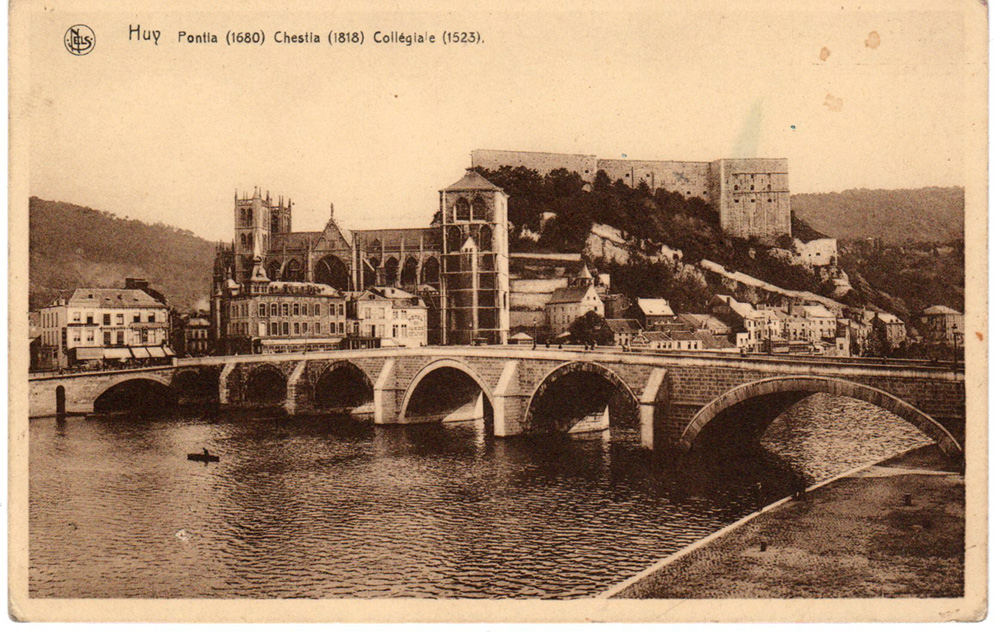
They then went on a three-day train journey to Tost in Upper Silesia (now Totzak, Poland) where 1,800 men were interned at a former lunatic asylum, Illag (Internierungslager) VIII-H. Some of the Calais men managed to stay together in the same dormitory and eight of them sat together at the same table at meal times, together with P.G.Wodehouse. Tom didn't like him very much, found him effete and mannered. George Gregson gave their names in his Journal on the 2 March 1941:
"Well, I have changed my table after all and am now at the same as Wodehouse, Webb, Davies, Rainey, Sarginson, Dutnall, Youl, Pickard and Barryball. Much better in every way. Usual dreary Sunday – they are always longer than other days however."
Jeanne said "When
my mother heard that George was having mental problems, she loyally
refused to believe it: she said he was faking it, so that he might be
returned to England and could then rejoin his unit."
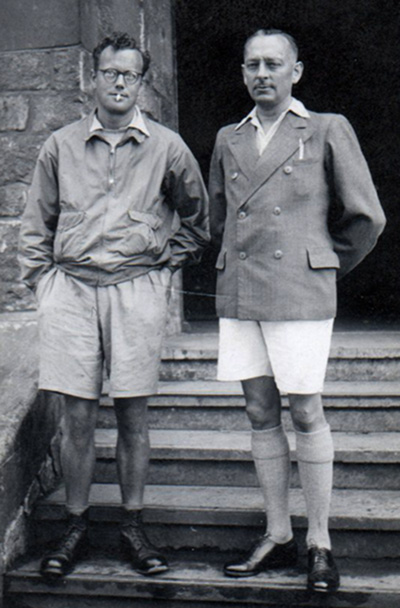
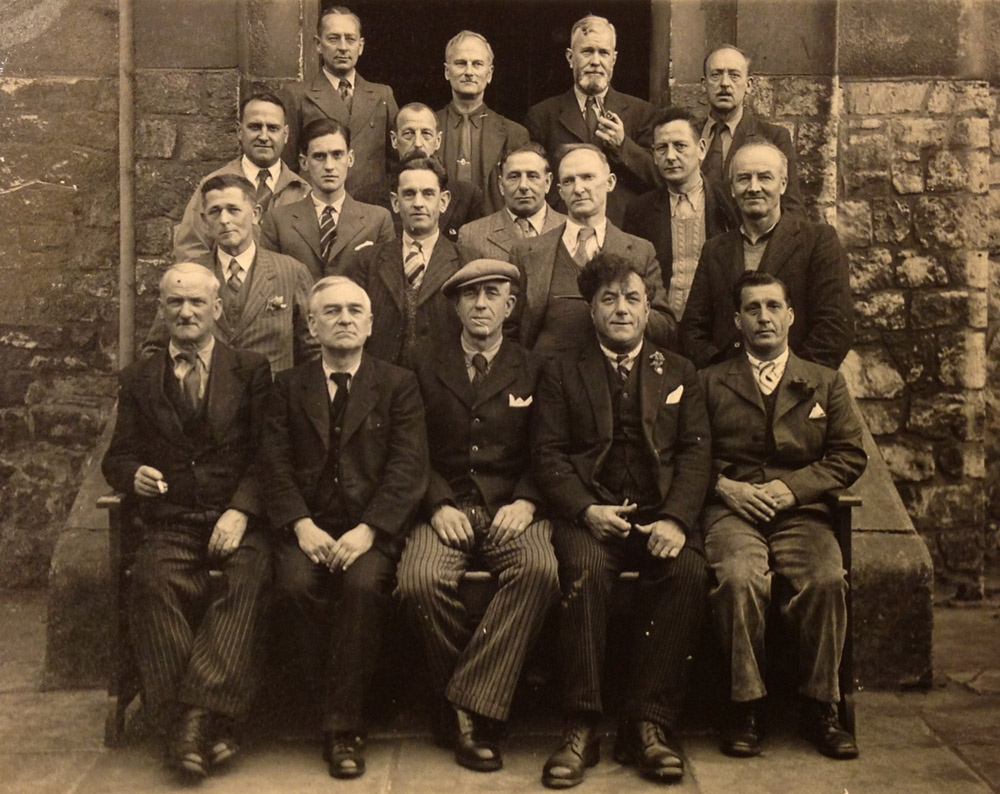
Tom Sarginson and some of his fellow internees at Ilag VIII-H, Tost, in Upper Silesia
Left:
Tom Sarginson always dressed imaculately and his appearance contrasts
sharply with the unidentified internee on the left who is casually
dressed, hands in pocket and smoking a cigarette
Right: From left to right, back
row: Sarginson, West, Gregson, Goard ; second row: Rainey, Yule, "Stock
Keeper SO" (name not given), Pegrum; third row: Pauline, Ernest
Dutnall, Harold Ratcliffe, Londoy
Front row: Perry, "chemist SO" (name not given), Lockwood, Larkin, Oliver Holding
Courtesy of Guy William Ratcliffe son of Harold Ratcliffe
Tom decided that he would try and keep himself fit and busy. He was at different times Deputy Camp Captain, on the entertainments committee, on the sports committee, helped to build the dam, gave French lessons, made a couple of model boats, a cabin cruiser and a sailing boat, and passed his English School Certificate, his "Matriculation" ("French excellent"). He would walk round the perimeter each evening (four circuits made one mile).
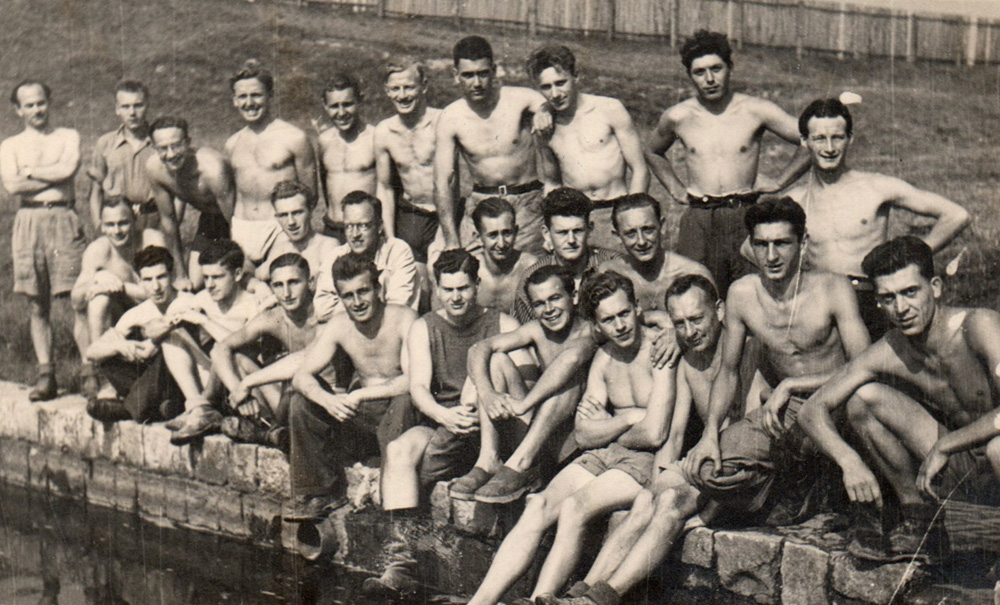
Apart
from business men and employees of the War Graves Commission, all sorts
of other people with a British passport had landed in the camp. Tom
said there was even a boat-load of missionaries caught at sea! And
there were actors, performers who had been touring the continent who
hadn't gone home in time. Tom said that the shows they put on in the
camp were every bit as good as any shows he'd seen in peacetime. Tom sang a French
carol in the camp chapel at Christmas time, but on the whole preferred
to see the shows rather than participate. The head violinist in the
photo was very well known in Holland.
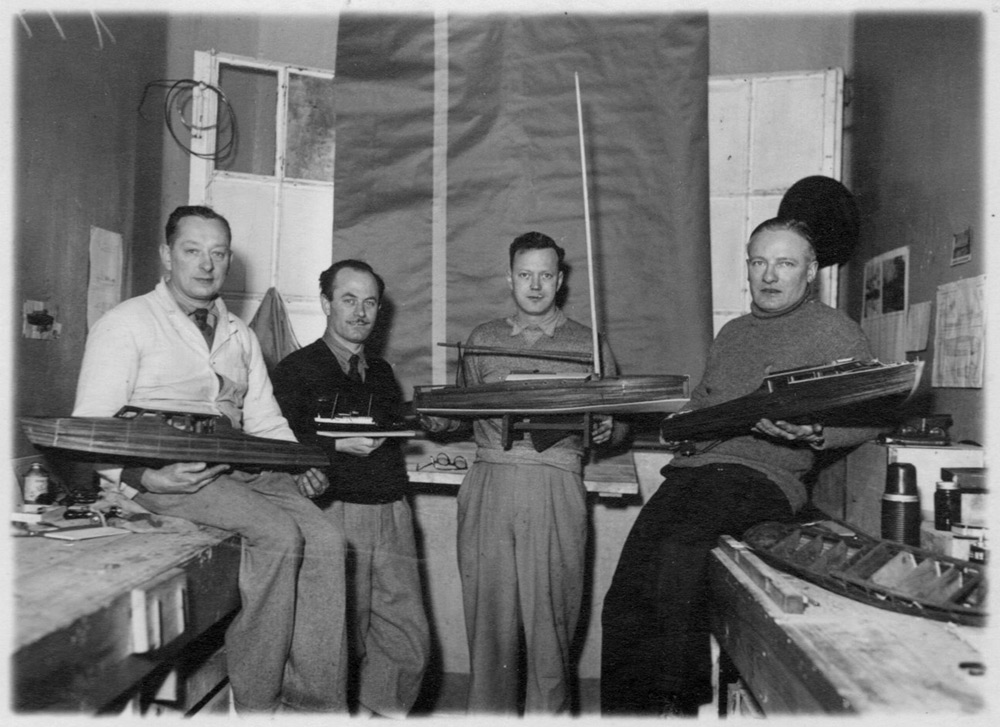
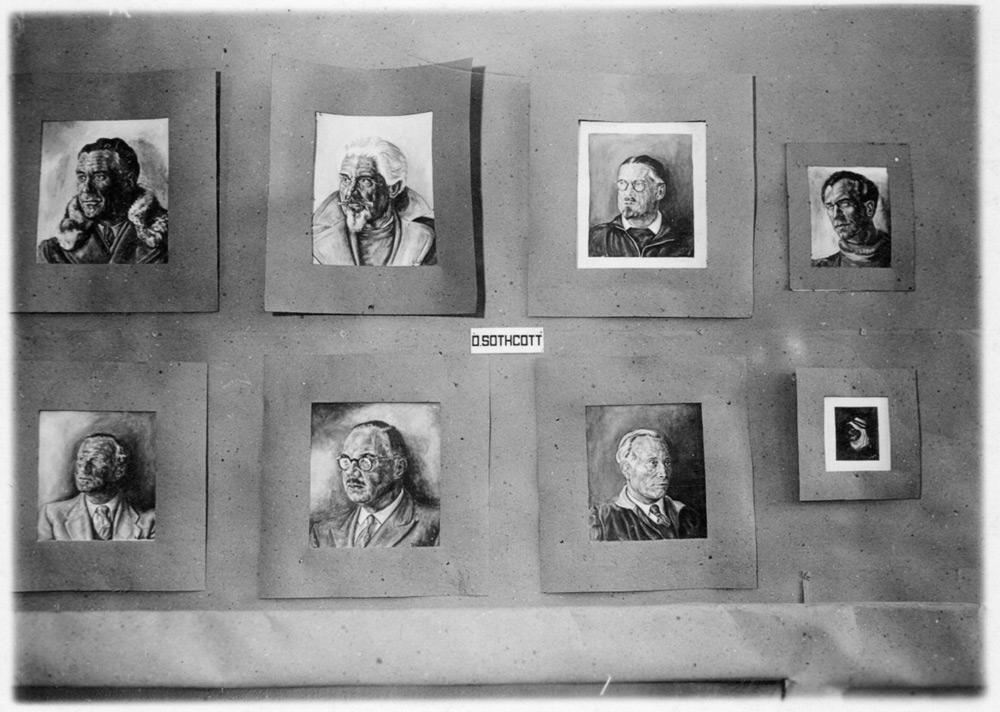
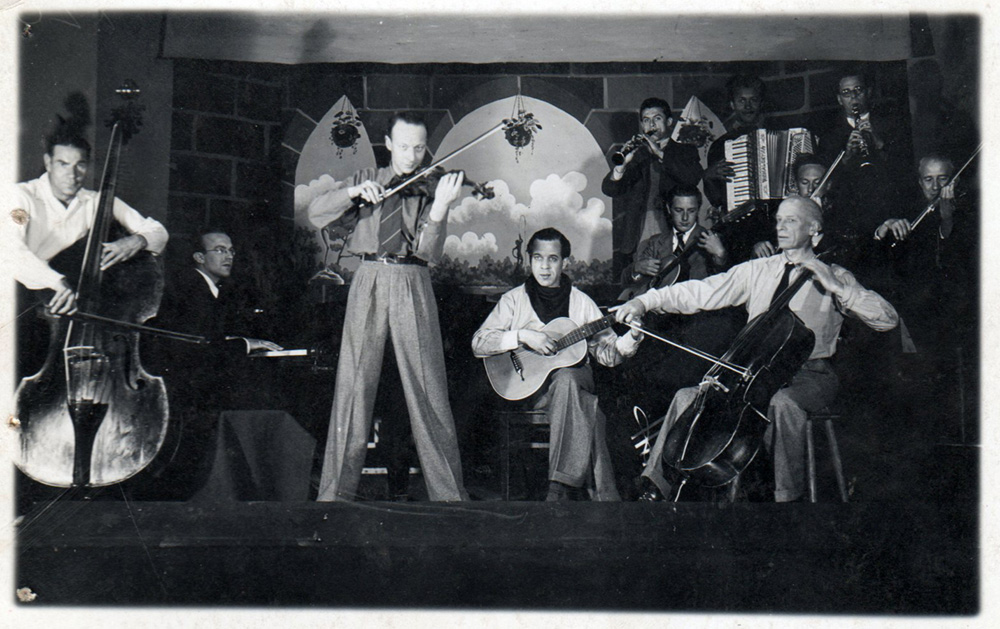
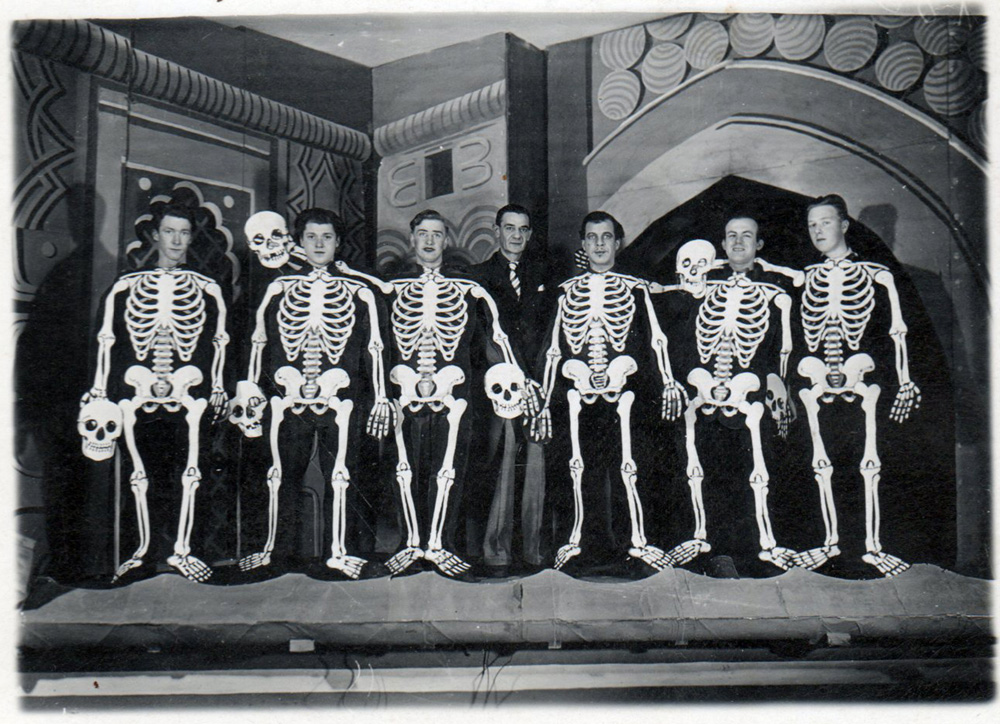
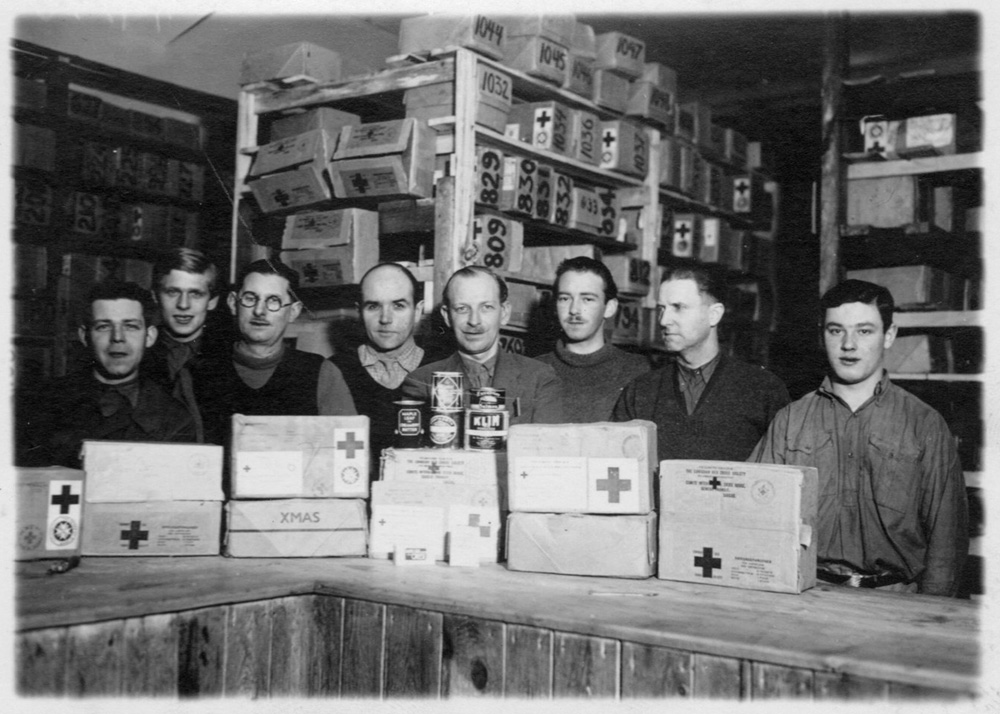
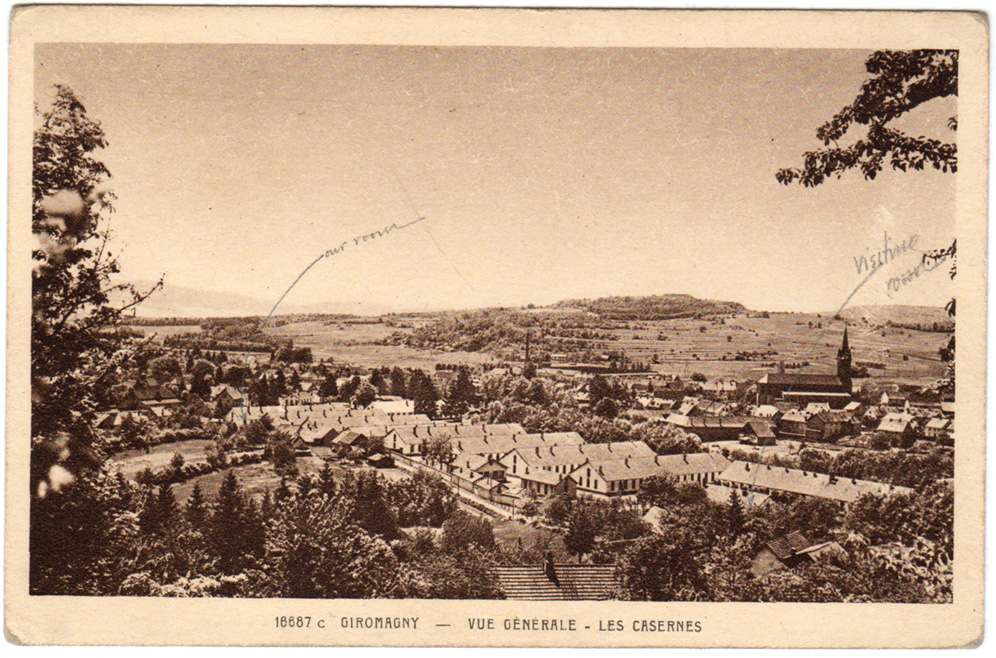
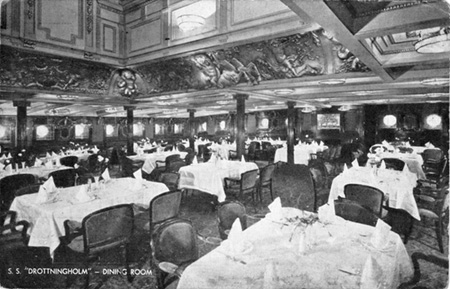
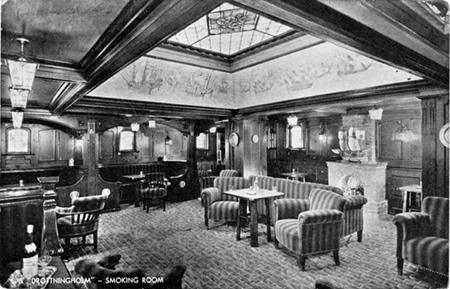
What happened to "Nell and the Girls"?
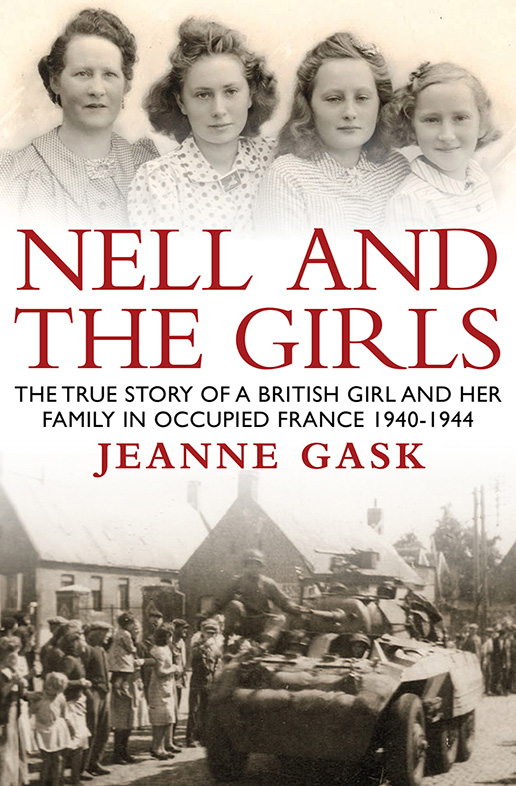 My
English mother and us three girls were arrested in July and taken away
by army lorry. Nell had been told that, since Irene and I were born in
France we were French and could be left behind in Calais, and she and
Marie, both born in England, had to go where the authorities chose to
take them. Of course, Nell wanted to keep the family together and any
thought of leaving half her family behind was preposterous. We stopped
for the night at Les Attaques on the 27th July 1940 and George Gregson
mentioned meeting us there in his journal.
My
English mother and us three girls were arrested in July and taken away
by army lorry. Nell had been told that, since Irene and I were born in
France we were French and could be left behind in Calais, and she and
Marie, both born in England, had to go where the authorities chose to
take them. Of course, Nell wanted to keep the family together and any
thought of leaving half her family behind was preposterous. We stopped
for the night at Les Attaques on the 27th July 1940 and George Gregson
mentioned meeting us there in his journal.
"About 2pm, we all got into a lorry and were taken to Les Attaques, where we found other English. We had been joined in the morning by Mr and Mrs Wesley, each 72 years old, from Sangatte and, one way or another, our party had grown to 14. At Les Attaques, we found others from Calais, principally women and children and including Mrs Yule and Mrs Sarginson. Germans gave us some tea in the evening. Slept pretty well though feeling doubtful about the straw." George Gregson.
Mae Youll was our next door neighbour in Calais, married to
Sandy. I have a vivid memory of George and Nell, my mother, sitting
with their backs to the wall, having a long whispered conversation into
the night, while us three girls slept on the floor.
We were held in an internment camp outside Lille for six weeks, then taken to Cambrai where the bottom half of a gloomy empty house was broken into and we were told to live there. Nell had a very difficult time with three growing hungry girls and little money but we could go to school. At first she had no idea what had happened to Tom; he wrote constantly but his letters didn't reach her until November 1940, and she knew no-one.
In
his letters Tom tried constantly to boost my mother's morale and to
help her with the upbringing of us girls. She, being an English woman,
removed from her comfort zone in Calais, had very bad time but her indomitable
spirit saw her through. After
the internees were moved from Tost to Giromagny she was twice allowed
to visit her husband, facing difficult journeys as there was so much
bombing of railways.
The men were repatriated in September 1944 when, after an horrendous journey through Germany,
they left Gothenburg, Sweden, on three cruise liners. Tom was on the SS Drottningholm,
the same ship that brought George
Gregson back from Portugal. When he finally arrived at his In-law's
house in Birmingham, there was no news of Nell and the girls.
We were freed on the 2 September 1944 and flown home two days before Christmas to an emotional family reunion. I have tried to describe how we lived from a child's point of view in my book, "Nell and the girls".
Nell and the Girls: the true story of a British Girl and her family in occupied France 1940-44; by Jeanne Gask.
What happened to Tom?
After the war Tom went back to
Calais to help re-open the factory, but his heart wasn't in it. He
found it very difficult to get supplies delivered and get things going
again. Despite being highly respected in Calais where he was known to
everybody as "Mr Tom" he thought France the country where he was
born was finished and decided to return to Britain.
He sold his car and worked for
Courtaulds in Coventry until his retirement. He bought a plot of land outside Rugby and
inspired by reading an article in a 'Do It Yourself' magazine on "How
to build a £2,000 house for £1,000" he built his house for £998 and
spent his retirement growing vegetables. He died in 1964 aged 69.
*****************
Jeanne explained what happened to her Mother and sisters after their return to England:
"Marie joined the WRENS as
soon as she possibly could. On her demob, she became an Air Stewardess
for BOAC. She married a BOAC Flight Engineer and had three children.
She died in 1981, aged 55. Nell
died just before her 91st birthday in 1989. Irene became a Nurse, rising to Nursing
Sister, and married one of her patients. They had one child and lived in
Stroud, Gloucestershire. She is now aged 86. I never really settled
down, married Tony Gask and also had three girls. Lately, I became a
Blue Badge French speaking Tourist Guide and am now writing up the
family history."
Read about George Gregson's service in two world wars and his internment at Tost (Illag VIII)
Return to the Evacuation of British citizens from Calais by HMS Venomous in May 1940